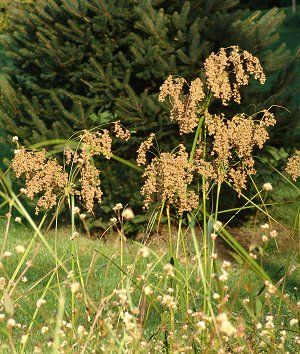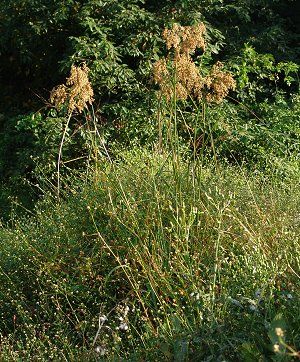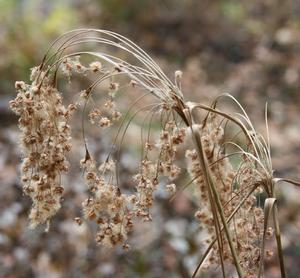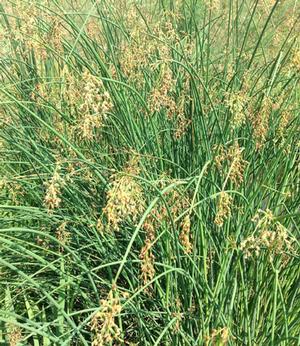Scirpus cyperinus
Common: wool grassScirpus cyperinus LP50 - 50 per flat
- Height: 4'-6'
- Spread: 3'-5'
- Spacing: 18"-24"
- Hardiness Zone(s): 3-9


Scirpus cyperinus LP50 - 50 per flat



Prefers moist to wet, peaty, sandy soils in full sun. Self seeds. Propagate by seed or division in spring. Best used in naturalized areas, and next to ponds or streambeds.
Scirpus cyperinus is a large, upright marsh grass with attractive wooly inflorescences that turn coppery in late summer and persist into winter. Growing 4-6’ tall and 2’ wide, this grass-like emergent has basal tussocks with arching blades that slowly spread by rhizome. Scirpus spp. are one of the first plants to colonize wetland areas and provide essential erosion control as they tolerate buffets of wind and waves which allows for other species that need quieter waters to establish.
S. cyperinus can be found in sedges, swamps, ditches and moist meadows, preferring moist to wet, peaty, sandy soils in full sun. It grows throughout North America with high population concentrations from southeastern Canada through New England to North Carolina and west to Oklahoma and Iowa. When placed in a happy location, wool grass will self-seed and spread by rhizomes.
Scirpus spp. are an essential plant for wetland life. Seeds provide food for birds, emergent foliage provides habitat and forage, and roots provide food for wetland mammals. It is a larval host for the Dion Skipper. It is best used in naturalized areas, and next to ponds or streambeds where it can take shallow waters and periods of inundation. Unusual seedheads are plume-like and excellent material for drying and cut flowers.